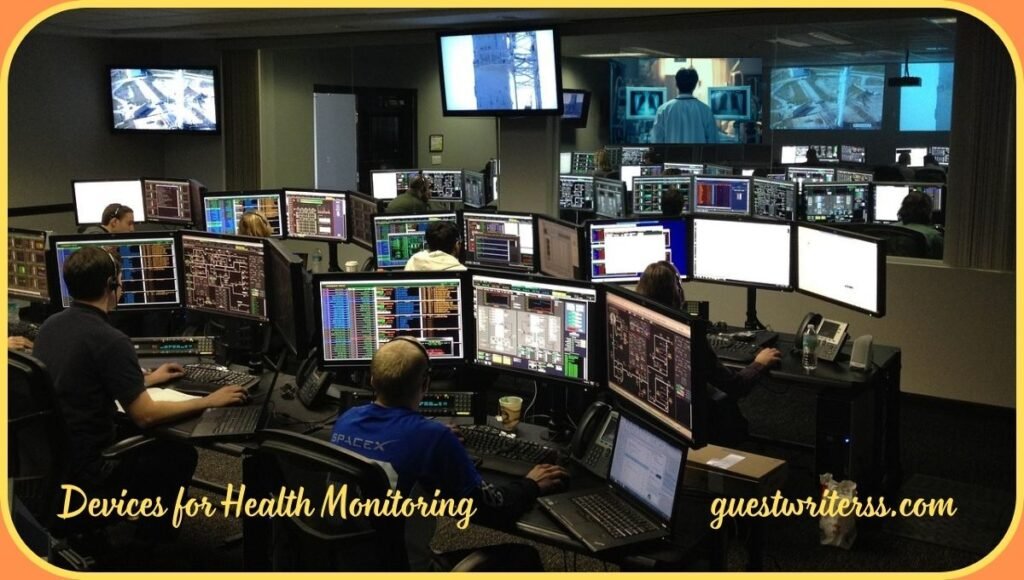Table of Contents
ToggleIntroduction: What Technology Is Use in Assisted Living Facilities?
Assisted living facilities have adopted modern technology to enhance the better care of seniors. During the last couple of years, what technology is use in assisted living facilities has developed highly? This change is essential for improved safety, healthcare, and communication. Facilities are relying on innovations based on technologies for better care of the elderly in the contemporary world.
In this article, we’ll be discussing technology use in assisted living facilities. From wearables to AI-driven tools, technology is transforming daily operations. You will understand what technology is use in assisted living facilities and how that impacts the resident by the end of this article.
Key Technologies in Assisted Living Facilities
Advanced technology has led to many devices and tools in the application of assisted living. It enhances healthcare, improves safety, and increases overall convenience. Below is what technology is use in assisted living facilities today.

Wearable Devices for Health Monitoring
One of the commonest answers when asked to state what technology is use in assisted living facilities can be wearable devices.
These gadgets monitor heart rate, blood pressure, and activity levels, as well as falls, so that the responding caregivers would take immediate action during emergencies. Such wearables really do change the game in elderly care-independence and safety.
Wearables provide data in real-time. This enables care professionals to check on residents without intruding on their private space. For instance, smart watches and fitness trackers will prompt staff if the vital signs of the resident deviate from the normal range. This way, such measures translate to timely medical care when needed.
Smart Home Tech in Assisted Living Facilities
Smart home automation represents another fundamental aspect of the technology that assisted living facilities utilize. It basically enhances the quality of life of seniors, allowing them to control their environment with ease, hence making it easier for them if they need certain amenities on demand. Voice-controlled systems like Amazon Alexa or Google Assistant have the capability to do this. Which can actually manage lights and appliances, even the security systems.
These systems are really beneficial for elderlies who cannot move around very well. Voice commands allow their residents to control thousands of functions without leaving their beds. Smart home technology often incorporates safety systems, like emergency alerts and fall detectors, which can undoubtedly provide both convenience and safety.
Remote Health Monitoring
Remote health monitoring is what technology has come to mean in the assisted living facilities. Healthcare providers receive data simultaneously from digital thermometers, glucose meters, and blood pressure monitors. This technological advancement allows for early detection of health issues.
Medical staff can scan the data and input necessary changes to the care plan. With remote health monitoring, it ensures that healthcare has been proactive as opposed to reactive, thus improving the overall health outcome.
Improving Communication and Social Interaction

Another crucial area of what technology is use in assisted living facilities is communication. Older adults are lonely, especially if they are miles away from their loved ones. This is changing with technology.
Video Communication Tools
Video conferencing tools, such as Skype or Zoom, are a must-have for assisted living. They ensure that the conditions of loneliness have limits as they allow elderly people to reach their families and friends very easily. They also enable virtual consultations from doctors, which ensures the proper availability of medical advice.
A lot of positive health impacts occur when it happens true with loved ones. Video calls enable bonding between family members where they cannot visit each other physically.
Social Engagement Tech in Assisted Living Facilities
Online platforms also cater to seniors for social engagement. These include group exercises, discussions, and entertainment. Seniors can be able to engage in virtual games, book clubs, or even online exercise sessions.
Such sites are pretty important in cutting the line separating people from joining in full-time active living. It provides a community’s natural perspective and suggests active engagement.
Safety and Security Inventions

Safety is the most paramount issue in assisted living, and what technology is use in assisted living facilities reflects that concern. Many security systems today protect the residents.
Security Cameras and Motion Sensors
Assisted living facilities employ security cameras and motion sensors as integral components of their technology systems. They monitor the facility on a continual basis, showing staff whenever suspicious activity is taking place. Motion sensors also detect when a resident chooses to leave their room, allowing staff to account for them and provide supervision for their safety and well-being.
Other cameras use AI-based facial recognition to monitor who is coming and going to keep protected areas inaccessible to unauthorized personnel and residents.
Emergency Response Systems
It is essential for all assisted living facilities to have an emergency response system, regardless of the technology applied in them. Some of these systems are wearable panic buttons and fall detectors, and these automatically alert the staff in case of an emergency if the resident activates the button on these systems.
Most of the recent emergency response systems directly link caregivers and family members to mobile applications, informing them of any occurrence requiring immediate attention.
Health Technologies in Assisted Living Facilities

Technology applied in assisted living facilities has centered on healthcare. Advanced tools now make health care streamlined for the residents.
Artificial Intelligence for Predictive Care
AI is increasingly shaping how technology functions in assisted living facilities. What it does is to analyze health data and predict potential issues before they become serious problems. AI systems thus can identify changes in the health of a resident, such as irregular sleep or shifting behaviors that could point to some health problem.
Predictive analytics of healthcare enable caregivers to recognize issues early, thereby reducing hospitalizations and improving broader health outcomes.
Medication Management Systems
Another aspect in which technology is making a difference is medication management. An auto-dosing machine reminds residents of their scheduled drugs at the right time to take medication. The appliance ensures that the user takes the right dosage, reducing errors.
The caregiver uses their mobile device to update systems on medication status. Additionally, this ensures better coordination.
Emerging Technologies in Assisted Living
Several emerging innovations may hinder the advancement of assisted living technology. Undoubtedly, these changes will transform senior care.
Virtual Reality for Cognitive Stimulation
Virtual reality is rapidly emerging in assisted living. It enables seniors to explore new locations and visit museums without leaving the facility. Cognitive exercises will use it to boost brain activity.
Robotics for Support in Daily Living

Robots greatly reduce the technology used in environments offering assisted living.
These robots often assist in tasks such as meal delivery, housekeeping, and companionship. This reduces pressure on caregivers and ensures that elder residents receive dependable care.
Conclusion: What Technology Is Use in Assisted Living Facilities?
In conclusion, it is very important to understand what technology is use in assisted living facilities so that this type of assisted living facility improves the quality of care and the everyday lives of seniors. Wearable devices and AI, for example, smart home technologies, and even robotics will change all the ways that assisted living facilities operate. Through such evolutions, seniors will continue to enjoy safer, healthier lives in facilities that are increasingly more connected.
FAQ: What Technology Is Use in Assisted Living Facilities?
What are the benefits of wearables in assisted living facilities?
The wearable senses the vital signs and falls. It ensures that caregivers get to view data in real time. Thus, medical personnel offer immediate attention when needed, greatly reducing the risks associated with the usage and making it regarded as safe.
How does smart home technology improve the quality of life for seniors?
Smart home technology allows elderly persons to control lights, temperature, and security through voice command, increasing independence and convenience.
What is the impact of AI in assisted living?
AI can predict health problems by reading data. Addressing a problem before it becomes serious greatly reduces its impact.
How far do communication tools help reduce isolation among residents?
Video communication, or video calls, provide an older person with enough opportunities to stay connected with family members and use more face time with family and friends to combat loneliness and depression.
How do care homes implement emergency response systems?
A wearable panic button and fall sensor will instantly alert caregivers, ensuring a prompt emergency response.
Do care homes use robots?
Yes, care home robots help older adults to complete their day-to-day work, like delivering meals and cleaning the house. They also alleviate a caregiver’s burden. Moreover, they provide support to patients consistently.
Read more about Technology and other articles on Guestwriterss.















